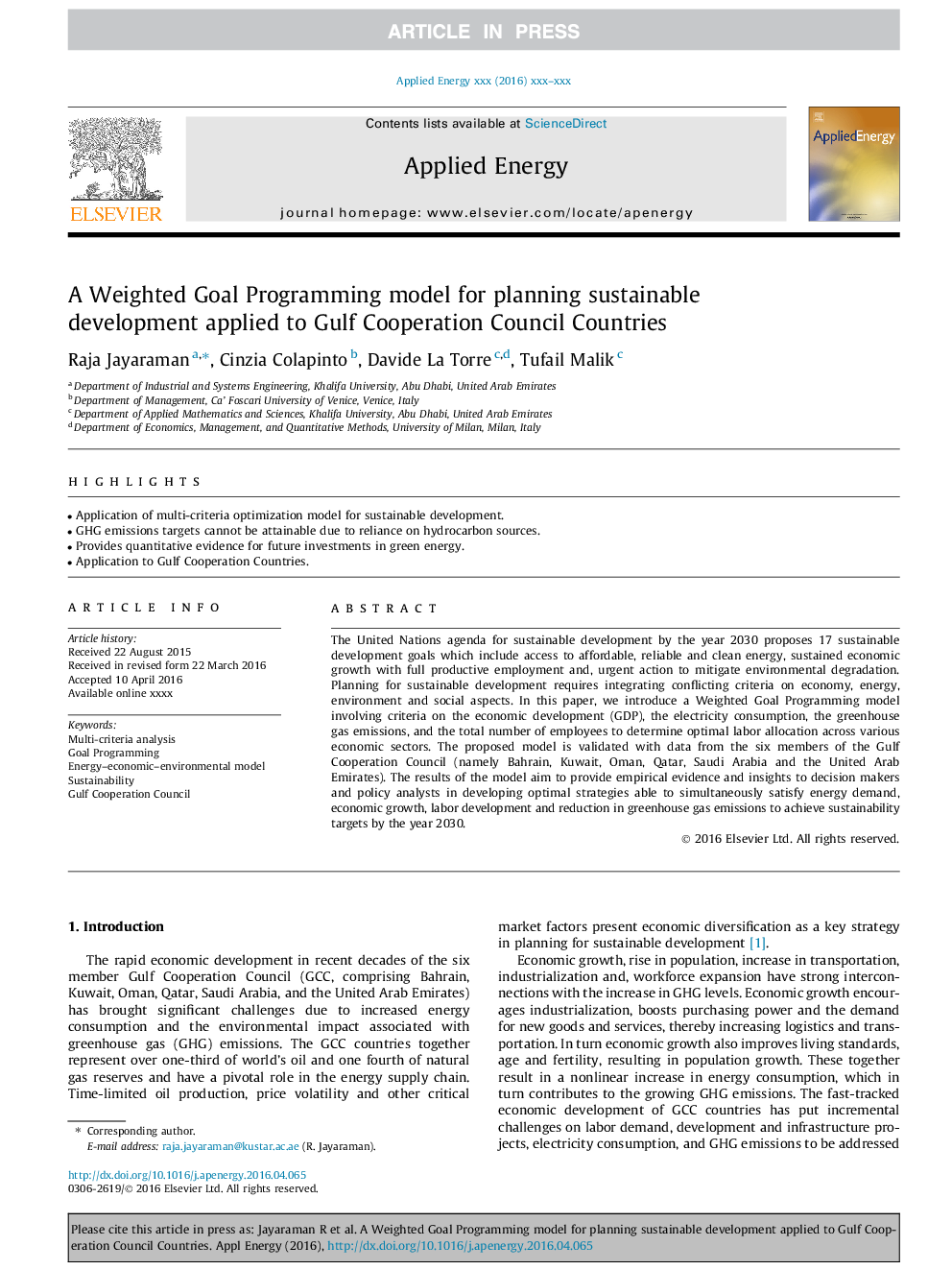| Article ID | Journal | Published Year | Pages | File Type |
|---|---|---|---|---|
| 4917125 | Applied Energy | 2017 | 9 Pages |
Abstract
The United Nations agenda for sustainable development by the year 2030 proposes 17 sustainable development goals which include access to affordable, reliable and clean energy, sustained economic growth with full productive employment and, urgent action to mitigate environmental degradation. Planning for sustainable development requires integrating conflicting criteria on economy, energy, environment and social aspects. In this paper, we introduce a Weighted Goal Programming model involving criteria on the economic development (GDP), the electricity consumption, the greenhouse gas emissions, and the total number of employees to determine optimal labor allocation across various economic sectors. The proposed model is validated with data from the six members of the Gulf Cooperation Council (namely Bahrain, Kuwait, Oman, Qatar, Saudi Arabia and the United Arab Emirates). The results of the model aim to provide empirical evidence and insights to decision makers and policy analysts in developing optimal strategies able to simultaneously satisfy energy demand, economic growth, labor development and reduction in greenhouse gas emissions to achieve sustainability targets by the year 2030.
Related Topics
Physical Sciences and Engineering
Energy
Energy Engineering and Power Technology
Authors
Raja Jayaraman, Cinzia Colapinto, Davide La Torre, Tufail Malik,
